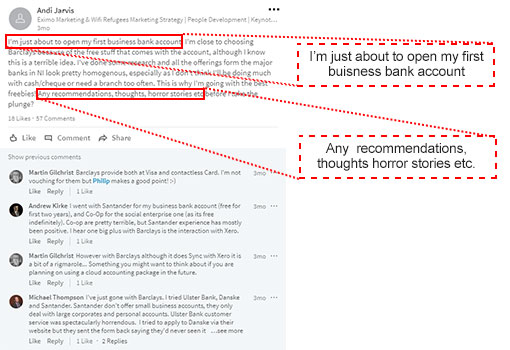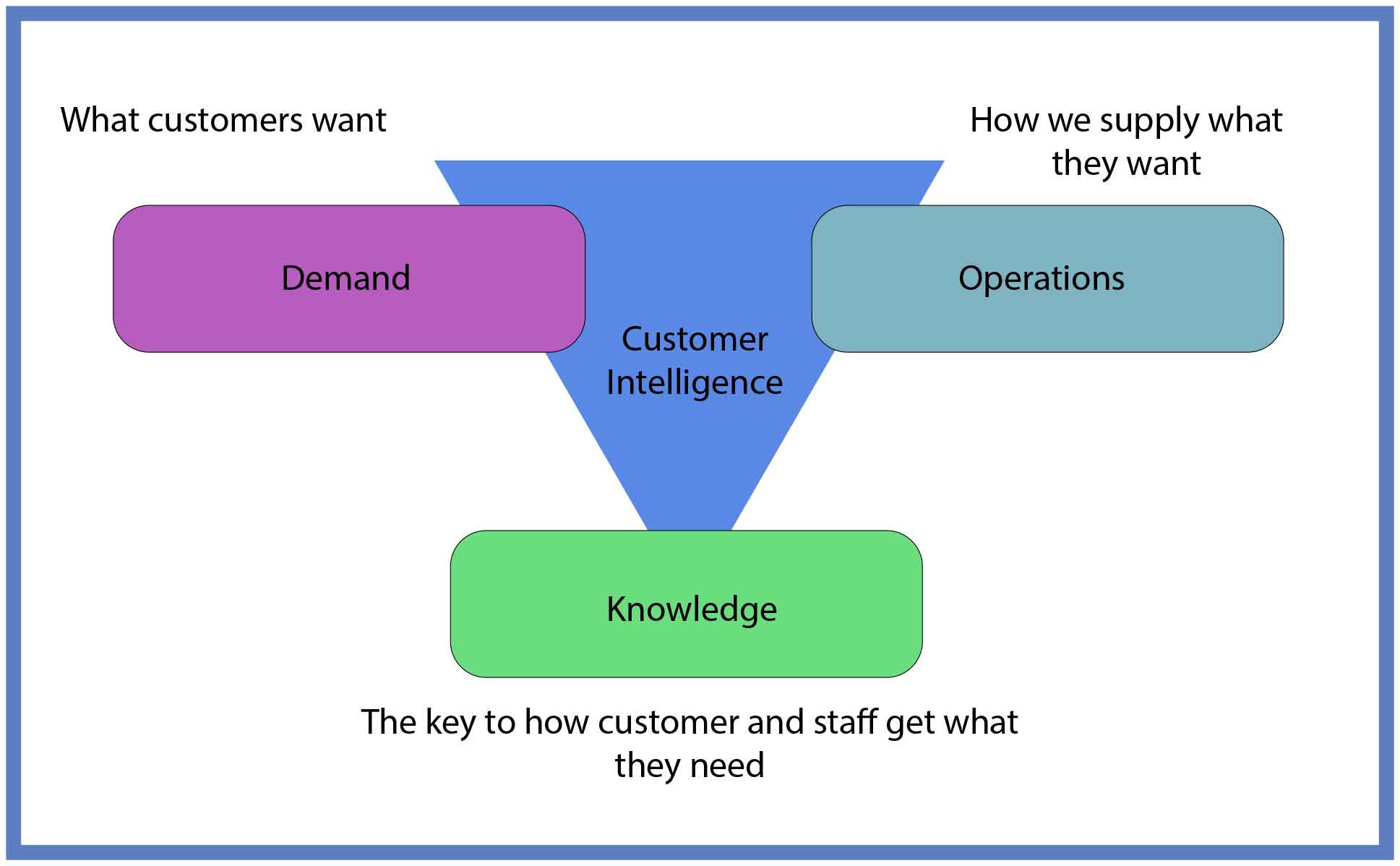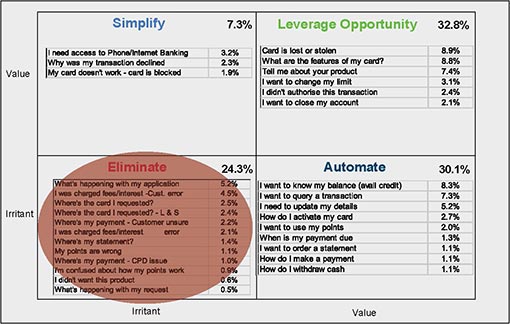Here are 11 best practices that can be used to boost knowledge management in the contact centre.
1. Think Knowledge Sharing, Not Knowledge Management
Knowledge management tends to imply putting the knowledge in certain places and managing it. But Peter Massey, the Marketing Director at Budd, argues that “knowledge” should not be categorised in this way.
Instead, he prefers the term “knowledge sharing”, which emphasises that this knowledge should be used in all areas of the business.
Peter says that this is because “the knowledge resides not only with the company, but it can reside with customers, suppliers and all sorts of people so in many knowledge situations.”
So, when considering knowledge management, contact centres should be thinking about “bringing information together, or observed knowledge that it doesn’t control but that can be republished and is useful to the organisation.”
With this in mind, it could be a key part of “knowledge sharing” to pass on common complaints about a product, which could perhaps be logged by advisors to the design team. This could help to further satisfy customers and could reduce call volumes, if the design team act on the feedback.
For more ideas like this, read our article: 12 Top Tips to Reduce Inbound Call Volumes
2. Use the Language That the Customer Uses
Storing knowledge using the words that customers use is, as Peter Massey says, “the smartest place to start”.

Peter Massey
While advisors ordinarily “understand customer terminology straight away, because they talk to people all the time, when you talk to a manager in an operation, they don’t always get the words that a customer uses.”
In fact, in all his experience, Peter has found it “incredibly hard to stay in the language of the customer, because those in the organisation are so used to using their own internal jargon.”
While different departments – whether services, resources or the back office – may think that there is a great disparity between the calls that they handle, Peter believes that there is useful knowledge to be shared between the departments. And, if written in the language of the customer, this shared knowledge can be used to address the mutual needs of customers – across departments.
“It’s very important to be able to address knowledge by saying: ‘what are our top customer needs? And, what are they in their language? Try to take as much jargon out of it as possible.”
3. Don’t Forget About Crowdsourcing Knowledge
The way that knowledge is being shared between customers is a vital ingredient in any knowledge management situation, Peter Massey says.
So, it’s also important to consider “managing” crowdsourced knowledge too. This is because “organisations need to watch what people are talking about, because it gives them more insight into what their top issues are and may even help to provide future solutions.”
This can be done through online surveys or through observing forums and social media. The example below shows how a company was able to track good feedback on social media and make a sale off a positive review.

In this example, a bank was able to create a customer by reaching out to them on LinkedIn
By simply spotting what was going on in this LinkedIn conversation, where somebody was looking for a place to take their business banking, one bank was able to join in the conversation, on the back of positive feedback, and was able to close business as a result. But the watching and the learning is the most important thing when thinking about knowledge management.
For more on this topic, read our article: Who Is Using Crowdsourcing for Digital Customer Service Enquiries?
4. Promote the Use of Key Journalistic Skills
Journalists are quick at picking up complicated situations, researching them and writing about them in clear way, before republishing that information. So, it’s quite interesting to look at the qualities of a journalist and ask: who needs to have those skills?
Think about whether it would be beneficial for knowledge management people to have these skills. Tech people? Advisors entering customer information into the knowledge system?
Peter Massey was involved in an initiative where a new contact centre was set up and it initially employed 30 journalists to handle calls. This meant that the journalists were not only finding out what the problems were, they were going away and researching them and writing content for the site.
This initiative was successful in lowering contact volumes, as the literature that the journalists were able to provide on the site prevented calls “bouncing” into the contact centre.
Although this was a successful initiative, it is unrealistic for most contact centres to go out and hire journalists, so equipping the team with basic journalistic skills may be useful.
Remember, the role of an advisor today is changing. It is very much about optimising resolution, not only empathising with the customer. As Peter comments, a modern advisor must be able to “research the problem, write up call synopses, update FAQs and let customers serve themselves with the knowledge the advisor has created.”
5. Be Clear About the Purpose of Knowledge Management
The purpose of the knowledge should be aimed at satisfying what customers want, and the graphic below highlights how customer expectations/desires should be met by combining operations and knowledge management, irrespective of the customer’s choice of channel.

So, if an organisation is self-serving, for example, a customer could go to the website or an app and they should come across the same knowledge that a member of staff would be looking for in the contact centre, or indeed that a chatbot would be looking for.
Being very clear that knowledge serves the purpose of connecting customer needs with operational design helps organisations to understand what it is and how it can be effectively utilised, according to Peter Massey.
In fact, Peter reports that already “we are seeing this start to come into organisations, almost as a realisation that knowledge is the same, regardless of channel, how you access it is no different.”
6. Assess How Well the Stored Knowledge Gets Used
Customers want operations that are designed to support the resolution of the contact and learning how to do that comes from the knowledge base.
So, organisations should look to close the loop, in terms of observing how well the knowledge it gathers gets used, whether it is used to find the resolution properly, and learning from that, so the company can improve the knowledge that’s available.
Advisors often know what the problem is but face difficulties in getting anything changed.
To assess the usage of knowledge, the contact centre should consider the impact it has on the operations that impact on customer service.
Attaining feedback in this way is “the whole point of trying to improve operations for customers, and that feedback loop is something we shouldn’t neglect,” as Peter Massey says.
Also, it is important that organisations ask advisors for their opinions on using the knowledge management system, as advisors often know what the problem is but face difficulties in getting anything changed.
7. Make Sure That Knowledge Is Being Applied in the Right Areas
The chart below, which is also known as a “value irritant grid”, is used in many areas of the contact centre and can be used to prioritise problem areas for which greater knowledge management is required.

Don’t try to improve things that should be eliminated
Once a contact centre has categorised customer problems into each of the four parts of the grid, the problems that hold little value for both the customer and company, can then be eliminated. The organisation can then focus on gathering and fine-tuning knowledge, to help advisors when they handle larger issues.
In fact, Peter says: “Don’t try to improve them, don’t automate and don’t spend lots of money on them to get to the root cause, simply take them away. Just make sure that, as an organisation, you’re applying yourself in the right areas.”
8. Don’t Overload the Knowledge System
One of our readers, Chris, suggests that a contact centre should “have a very clear idea of what you want your knowledge to be. Changing and adding too many different things during its lifecycle will make it complicated to use and muddy the information being developed.”

David Rowlands
This raises the question of how much information is enough, but David Rowlands, a Contact Centre Sales Director at 8×8, believes that a contact centre should also ask itself: “how current is the information?”
According to David, this is vital because “when handling calls from members of the public, it is important to remember that their lives may be changing, and if an advisor doesn’t capture that correctly, then it could lead to a poor customer experience.”
So, advisors should avoid making assumptions that the information is still relevant, i.e. does the customer still live at their last-known address on the system? This means that it is good practice to double-check and update the system while speaking to the customer.
Tips From Our Readers
9. Run Quizzes to Test Advisor Knowledge
Give advisors monthly quizzes to check their knowledge and get them used to using the contact centre’s knowledge system. These don’t necessarily have to be exam-style questions; instead management could pose a customer-related question and see if advisors can find the answer in the knowledge base.
Also, pairing this with an incentive for the quiz winner will help boost motivation for advisors to improve their navigation of the knowledge tool.
Thanks to Andy
10. Create Knowledge Owners
Having knowledge owners throughout a business can be an essential initiative in keeping the data up to date and the users accountable for the content.
Knowledge owners drive the content to ensure the knowledge is relevant and useful to its target audience.
These knowledge owners drive the content to ensure the knowledge is relevant and useful to its target audience, while they also maintain the architecture and integrity of the data.
If these knowledge owners are also skilled in journalism, they can ensure that information is written in the language of the customer and check that it makes sense to those in other departments of the organisation.
Thanks to Doug
11. Make Sure That Use of the Knowledge Base Is Included in Training
Make sure that the use of the organisation’s knowledge base is integrated tightly with the contact centre’s induction/training programme to set the culture for new starters.
One way to get the picture is to ask new recruits to shadow an experienced advisor, who can give them all the tricks to navigating the system efficiently.
It can also be useful for a someone from senior management to shadow an advisor as well, to get a first-hand idea of how to improve the knowledge management system.
Thanks to James
Do you have any ideas for improving knowledge management in the contact centre?
To have your say, leave a comment in an email to Call Centre Helper
Author: Robyn Coppell
Reviewed by: Megan Jones
Published On: 20th Dec 2017 - Last modified: 4th Sep 2025
Read more about - Technology, 8x8, David Rowlands, Editor's Picks, Knowledge Management, Language, Peter Massey







































